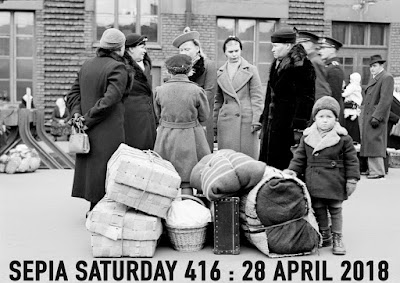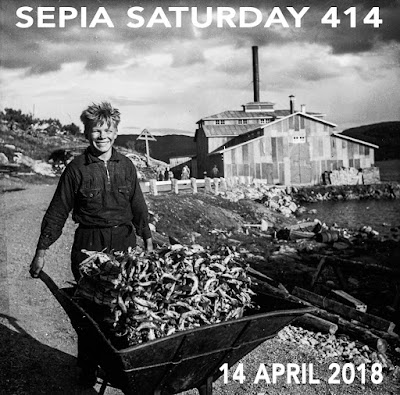A violinist stares directly into the camera lens,
his wide eyes framed by his wire spectacles.
There's hint of humor, as if he knows a joke
that hasn't reached the punchline yet.
his wide eyes framed by his wire spectacles.
There's hint of humor, as if he knows a joke
that hasn't reached the punchline yet.
His partner on valve trombone
keeps a straight face,
that gives him the appearance
of a young man not inclined
to make practical jokes.
keeps a straight face,
that gives him the appearance
of a young man not inclined
to make practical jokes.
They make an unlikely pair
as a trombonist and a violinist
would rarely sit near each other
given a choice.
as a trombonist and a violinist
would rarely sit near each other
given a choice.
Their postcard is an example
of the many musician photos in my collection
that have no names and no location recorded.
Who and where is just a guess.
The best I can say is
that the photo's paper card
was made in the United States.
of the many musician photos in my collection
that have no names and no location recorded.
Who and where is just a guess.
The best I can say is
that the photo's paper card
was made in the United States.
* * *
The guarded expression on this next violinist,
a serious older man,
is not so direct.
a serious older man,
is not so direct.
His companion is a young tuba player,
perhaps his son or brother.
perhaps his son or brother.
At the feet of the seated violinist
is a slide trombone,
making this duo almost a trio.
is a slide trombone,
making this duo almost a trio.
As with the first photo postcard
these two have no name or place.
Judging by their best suits
we can only speculate
that their photo was taken some time
between 1905 and 1918
these two have no name or place.
Judging by their best suits
we can only speculate
that their photo was taken some time
between 1905 and 1918
* * *
This somber fellow holds a mellophone,
an instrument which was once
the most common alto voice in American brass bands,
but has now become an obsolete design
bearing no resemblance to the modern marching mellophone.
an instrument which was once
the most common alto voice in American brass bands,
but has now become an obsolete design
bearing no resemblance to the modern marching mellophone.
On his lapel is a pin with the initials US
that suggests a date around 1917-18
when the United States joined the war in Europe.
that suggests a date around 1917-18
when the United States joined the war in Europe.
His compatriot is a drummer
with drumsticks hovering over a snare drum
that is tilted on the seat
of a twisted wire cafe chair.
with drumsticks hovering over a snare drum
that is tilted on the seat
of a twisted wire cafe chair.
Both young men look about the right age
to have joined the war effort
as either volunteers or draftees.
As they wear broad brimmed hats
rather than boys' caps,
I can't help seeing two farm boys
trying to look more mature than they really are.
to have joined the war effort
as either volunteers or draftees.
As they wear broad brimmed hats
rather than boys' caps,
I can't help seeing two farm boys
trying to look more mature than they really are.
This is their second appearance on my blog.
The first was in May 2010
A Drum and Mellophone Duo
The first was in May 2010
A Drum and Mellophone Duo
Though we may not know their names,
all three duos share a quality
of a kind of brotherhood, a close friendship
formed by making music together.
It's that timeless aspect that inspires my blog.
all three duos share a quality
of a kind of brotherhood, a close friendship
formed by making music together.
It's that timeless aspect that inspires my blog.



































